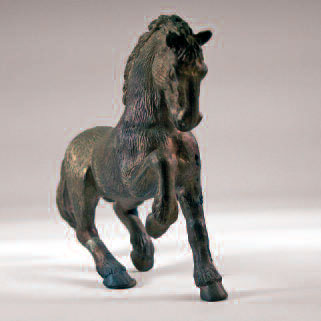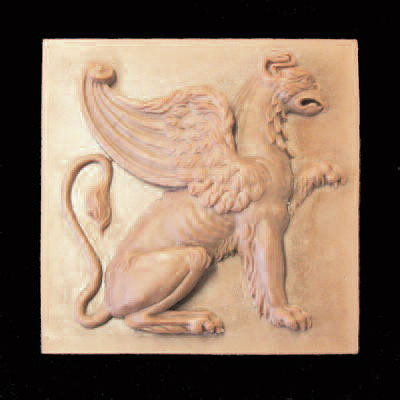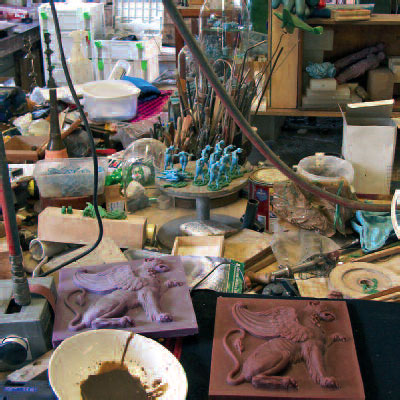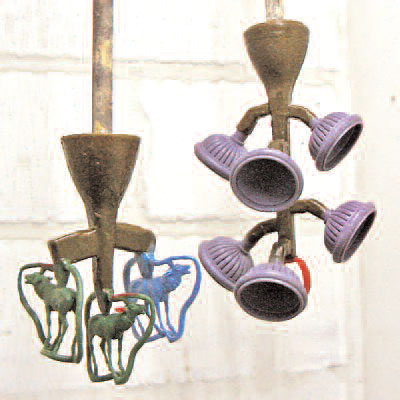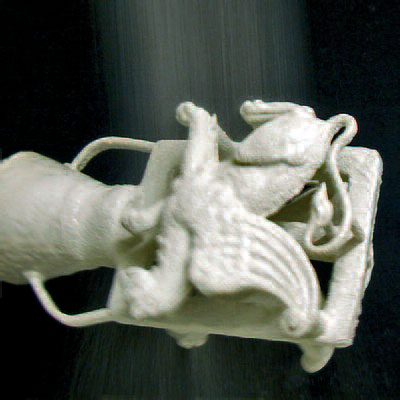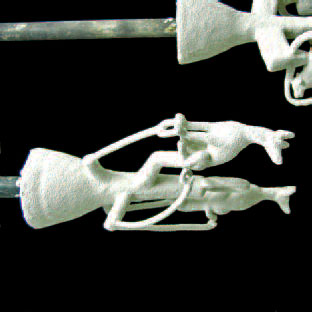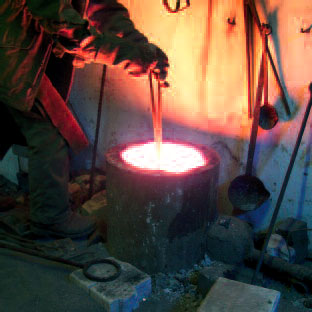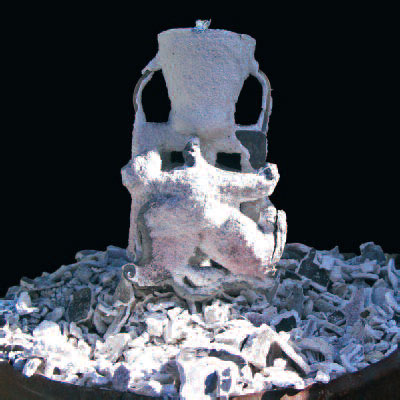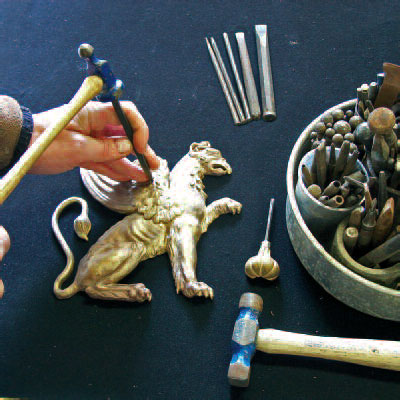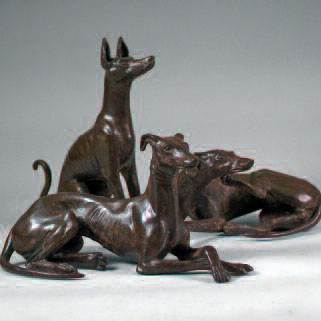|
Traditional Handcrafted Bronze Article and Photographs Coutesy of Dinsdale Petch Adam Binder and Dinsdale Petch are working together to produce Adam's new Bronze Sculptures and Miniatures. Mr. Petch has provided the information and photographs below to explain how bronze sculptures are made. We thank him for allowing us to share with you the details of this complicated process. Traditional bronze is an alloy of tin and copper. Both these metals are inherently soft, but when mixed, or alloyed, they become much harder. Nowadays, the same result is achieved by mixing silicon with the copper. This addition creates a very fluid alloy which captures the finest details. The Original 'Pattern'
Hand chased bronze master pattern The Rubber Mould The Wax Pattern Hot wax being poured into open rubber mould The image (above) shows a simple open mould made up of a rubber membrane supported by a composite case. Sculptures like Adam's, that are designed to be viewed from all angles, require rubber moulds made up of interlocking pieces to allow the delicate wax castings, complete with tails and tips of ears, to be removed from the mould without breaking.
Wax plaque on removal from mould Wax Fettling
Wax trees awaiting dipping Wax Tree Wax tree being dipped into first coat of ceramic slurry
Wax tree undergoing first ceramic dip
Raining ceramic grit and sand onto wet slurry on wax tree
Dewaxing Hot mould being removed from burn out kiln ready to have molten bronze poured into it Melting the Bronze Raw bronze grain before being melted in a crucible in the furnace
Removing crucible from furnace Lifting large crucible of bronze from furnace at 1100 degrees C Pouring bronze into a small ceramic mould buried in sand Pouring spare bronze into ingot moulds for re-use Removing the Shell
Destructive removal of ceramic mould from fresh cast bronze
Many hours later the final touches remove the slightest imperfections prior to patination Finishing the Bronze Patinating the Bronze Mrs. Petch said that during the development of Adam's bronze sculptures for his Exhibition, Adam was a regular visitor to the foundry. Both Mr. Petch and Adam experimented with different recipes in the patination stage to get the exciting finishes for his sculptures!
Finished Patinated bronzes (classic brown patina) Many collectors of Adam's earlier work are familiar with the making of the marble/resin pieces. Mr. Petch summarized the similarities and differences between these two processes: "The rubber moulds used in the wax making stage at the beginning of the bronze process are the same as those used for resin production. Instead of resin, we pour in molten wax which, once set, is removed and dipped repeatedly in the ceramic slurry which, once set, forms a tough ceramic mould capable of receiving molten metal. The wax is melted away and replaced by the molten bronze. Once cool, the ceramic mould itself is destroyed to recover the raw bronze sculpture. To see original PDF file, click here.
|
